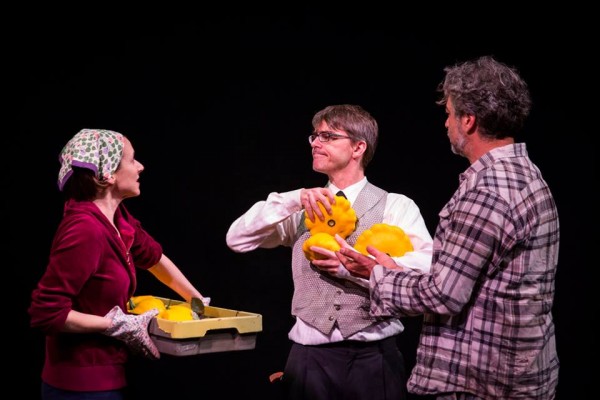
“Duels” a new play with Marianna de Fazio, Daniel Christensen and Carter Rodriquez. is on stage at 12th Avenue Arts through Sept 10, 2016. Photo: Andrea Sassenrath.
Review: Duels by Nick Stokes. Produced by Stokes/Amador Productions. Directed by José Amador. Music Writing & Design by Michael James Adams. Set Design by Silas James. Lighting Design by Tess Malone. Costume Design by Amy Lazerte. With Marianna de Fazio, Carter Rodriquez, Daniel Christensen. Now through September 10, 2016 at 12th Avenue Arts.
We j’adore a smart play.
And, by “smart” we mean just that…intelligent writing that is not afraid to use difficult ideas and complicated construction to tell a complex story. Smart writing is surprisingly rare…because it’s HARD to pull off. It takes smart people to even attempt it.
Fortunately, both playwright Nick Stokes and director José Amador are smart people and their new play collaboration, Duels is a fine example of a “smartly written” theatrical creation. It has a clever “backwards storytelling” framework, which isn’t easy to do. When it works, (Pinter’s Betrayal) it’s amazing. When it doesn’t work (Furth/Sondheim’s Merrily We Roll Along) it’s a bit disastrous….but with good songs.
Duels is a three hander that follows a yuppie married couple, Irene and John who buy their dream property in the country. John’s an uptight, capitalist ass who primarily bought the property as an investment. Irene however, gradually falls in love with the idea of actually working the land, and planting a garden and establishing something tangible with the land, and she does so with the help of a mysteriously enigmatic gardener named Juan. Juan and Irene fall in love and…things happen. Things involving guns.
Actually, “things happening with guns” happen REPEATEDLY as this play is not only told backwards, but the principle story/plot of Duels is repeated consecutively as well as told in a slightly different style each time the story is replayed as we move further and further BACK in time to the supposed actual/more realistic version of what happened between Irene, John and Juan. So, the very beginning of the play is played very broadly and in a “Theatre of the Absurd” style reminiscent of early Edward Albee. As we progress further back with each replay, that style gradually changes; it becomes more….for me, it feels more Sam Shephard-y…full of much symbolism and allusion. By the end of the play, it’s almost kinda/sorta realistic….ish. And, thus more tragic.
(Yes, this is a play made by extreme theater “nerds” and while it can be appreciated/enjoyed by the non nerd, it certainly doesn’t hurt to be aware of various different styles and theories of making theater.)
And, to help create this “smart play” Stokes and Amador have collected an equally smart group of people. It has a simple but very effective garden set design, complete with lots of dirt, by Silas James. And, an astonishingly large amount of multi-layered costumes all put together by Amy Lazerte. There’s a great lighting design by Tess Malone and evocative original music by Michael James Adams.
Most of all, there’s a very clever cast on hand here. Daniel Christensen has the tough job of making the “uptight, corporate white guy” likable and relatable to the audience…and he succeeds beautifully. His John is a jerk but he’s a jerk we can have empathy for. Carter Rodriquez does his usual fascinating job of bringing all sorts of interesting acting options to the table. Mr. Rodriquez is always an actor I look forward to seeing because he’s not afraid to make unusual choices. He’s like that fashionable friend you know who will show up wearing very odd combinations of clothing but they usually work. Here, as Juan, he gets to make some terrific choices as all his various versions of the character are each so individual and unique.
And, I very much admire Marianna de Fazio as Irene. She really has the hardest role because she’s the most stable of the trio and the actual center of the play, between the two men who have to play far broader aspects of their characters. Irene’s journey is gradual and subtle. It’s a very grounded and centered performance in every sense of that word and it’s superb work on the part of Ms de Fazio.
Duels is a fascinating and smart piece of theater making. But…it’s not perfect. It’s a 90 minute one act but the story loses steam at about the 60 minute mark as the play settles into a more naturalistic pace and tone. It’s also partly the fault of the repetitive story structure of the play. Not surprisingly, using repetition to tell a story can be powerful but it also creates the problem of getting TOO repetitive and thus losing the audience’s interest…”YES! We get what you’re saying!” There’s also issues with a heavy handedness with the symbolism. We’ve all taken that Lit class where the professor overdoes the explanation of what the woods mean in the works of Hawthorne, and that also tends to happen here as the story progresses. We very quickly understand the symbolism of “carrot/rabbit/coyote/wolf” and of the garden itself, which is always ripe with multiple meanings in any art form.
And, since this play requires much repetition (and small scene/prop changes and costume changes) that also becomes a bit of a problem. Those changes are handled deftly by the crew, but the sheer number of them does weigh things down a bit. My personal two cents: create material to help cover those changes, so while two actors have to remove clothes, the other actor would have something to do to propel the story forward. Doing that, and tightening up the last 30 minutes or so of the play would benefit enormously. Currently, Duels is an interesting and clever 90 minutes that is weighed down by about 10 minutes or so of flab. We’ll be lazy and use an Olympic reference by suggesting that right now, Duels is a bronze medal winner but with a few workouts it can cut its time down and win the gold. Regardless, it’s a show worth checking out for fans of intelligent theater.


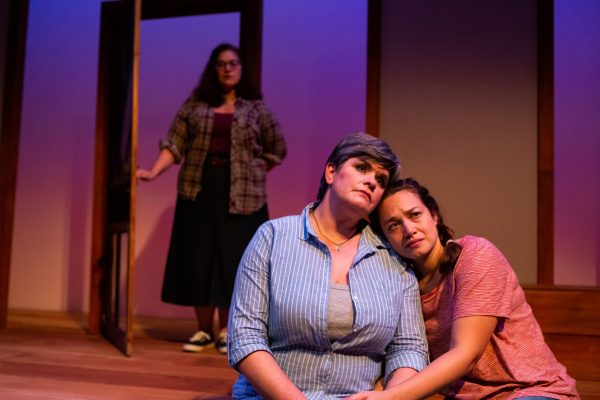


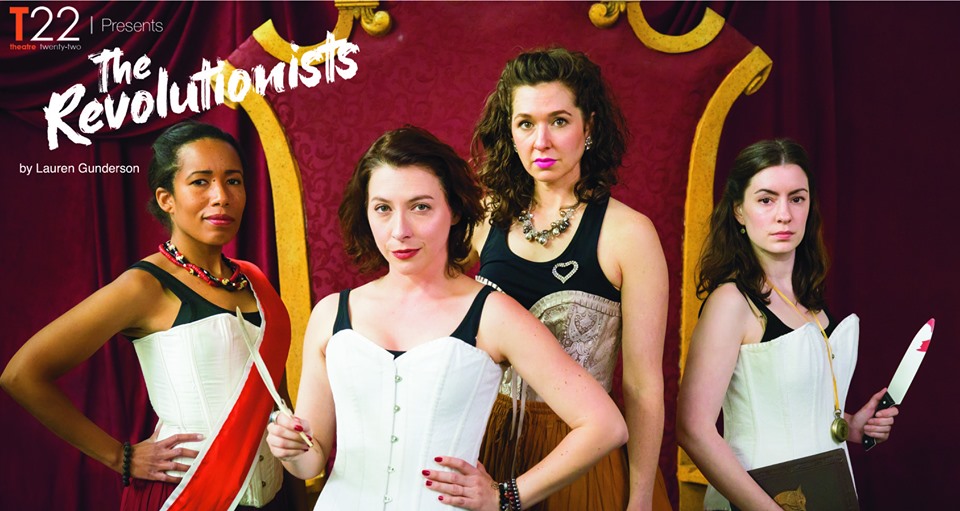
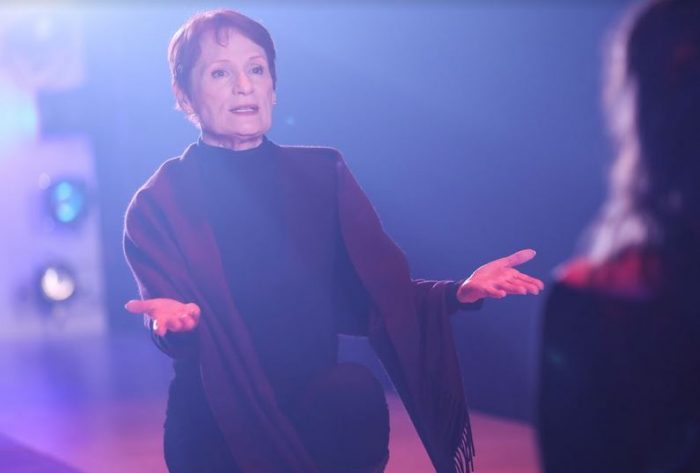
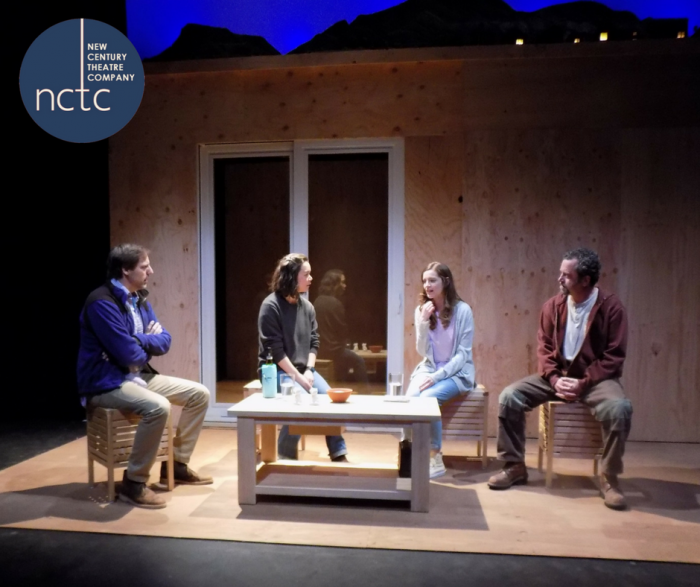
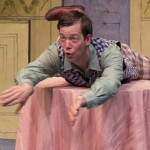

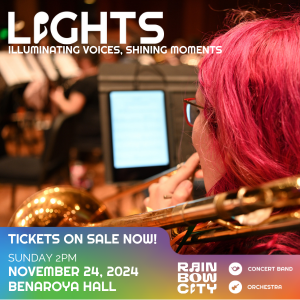












An impressive review of the play and its performance. Pertinent, historical references strengthen and illuminate the
essential points of the review.
High marks for the review and the play. Thanks.